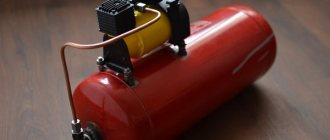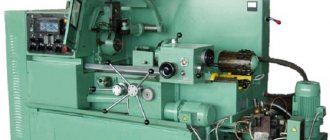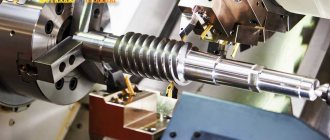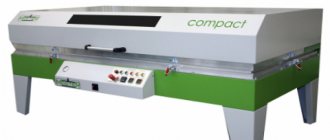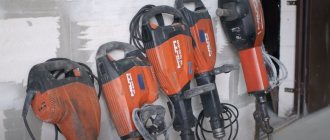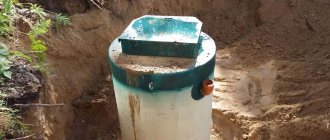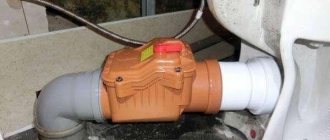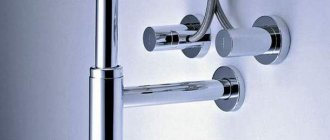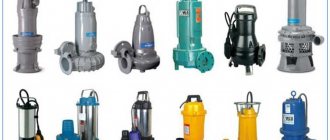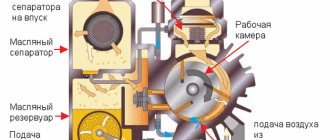WE TRUST
Manager Gerasimov Vladimir VasilievichIP head of peasant farm Gerasimova Galina Nikolaevna
“The YP-825A Great Plains seeder was purchased in the spring of 2014. When choosing a seeder, we were, of course, interested in what equipment was used on other farms, studied its characteristic features and conditions of use: what crops are sowed, on what soils, requirements for tractor power and other important parameters for purchase. Our choice of the Great Plains precision planter was based on positive feedback from other farms and the planter's advanced technology. A high-precision sowing device operating on the principle of “excess air pressure” showed the ideal placement of seeds in a row, which subsequently gave a positive result on the simultaneous development of plants. Sowing was carried out at an average depth of 5 cm at a speed of 9-10 km/h. In total, the seeder worked on 600 hectares, and during the entire period there was not a single malfunction in its operation. The resulting uniform shoots proved the correctness of our decision to purchase YP-825A. The high quality of sowing allowed us to get an excellent harvest. The reliability of the seeder and ease of adjustments were assessed by farm specialists at the highest level. We can confidently recommend the seeder to other manufacturers, incl. and those who are engaged in the production of high-quality seeding material for corn and sunflower.”
Seeders for working with corn seeds are a row-crop type device. Such units are suitable for some types of legumes and sunflowers. When choosing, you should pay special attention to the ability of the equipment to optimally distribute seed throughout the bed. The yield of the crop will depend on the fulfillment of this requirement.
DIY manual corn seeder - Metals, equipment, instructions
Seeder - equipment for sowing seeds (grain) into the soil.
Before their appearance, seeds were sown in the ground simply by hand - using the method of uniform and, preferably, accurate horizontal scattering. The main advantage of mechanical seeders is the uniform placement of seeds into the ground in depth and distance, which does not require additional surface harrowing after sowing. You can buy, rent, or make your own corn seeder.
Features of the device and types of corn seeders
The main difference between seeders for sowing corn is the following: they must place seeds at a specific depth and distance from each other. The more precise the planting, the better the seedlings, and, consequently, the harvest.
Sowing corn
Mechanisms for sowing corn should be selected with a dotted sowing method. They can be mechanical or pneumatic . But, recently, pneumatic ones most often appear on sale and are used in large-scale production. They more uniformly form the flow of seeds into the seed tubes, regardless of the size of the seed.
Seeders are:
- Special – equipped for one specific type of seed;
- Combined - add not only seeds to the soil, but also fertilizers;
- Universal - they can sow anything, but without applying fertilizers.
Each of them must contain:
- 1-2 compartments for seeds;
- sowing unit - a mechanism that evenly supplies seeds into the seed tubes;
- coulter - makes grooves of equal depth in the ground for seeds;
- cultivating mechanism – fills the furrows with the laid seeds.
According to the method of sowing there are:
- private;
- scattered;
- nesting;
- dotted (single grain);
- square-cluster. Stubble seeder-cultivator
According to the sowing method:
- pneumatic;
- mechanical;
- vacuum
Folk know-how:
- seeder-plough;
- seeder-husker;
- cultivator-seeder.
Principle of operation
A typical seeder feeds the seed into the seed meter, places the seed in the soil at the desired depth and equal distance from the previous one, and, using a complex seeding mechanism, completes the sowing process.
The pneumatic seeding mechanism usually consists of: a clod remover, a wedge point on a skid opener, a seed furrow filler and a compaction wheel.
If the seeder can be used directly on mulch or unprepared soil, then special discs are placed in front of the coulter to cut crop residues and create landing slots for the smooth entry of the skid coulter.
Sometimes such units can be equipped with additional devices for localized application of fertilizers with a diameter (and depth) of 5 cm from the seed. This method of fertilizing greatly helps to accelerate the development of corn at the stage of the first phenological phases.
Sowing with fertilizer application
A universal method of sowing at high speeds of movement of the seeder across the field, without compromising the tracking of seeding rates, seed placement depth, and even with the ability to place seeds in the soil in a checkerboard pattern, is achieved using seeders equipped with GPS devices.
They can sow and apply fertilizer without compromising precision and quality at speeds of 8 to 10 km/h thanks to the fact that they are additionally equipped with the appropriate electronic system and drive system (hydraulic and electric).
Some models of seeders
Like any equipment, corn seeders come in different varieties. And this is not just a whim of producers, it is an agricultural necessity. For example, small farms do not need large seeders; for home use, an attachment for a walk-behind tractor, etc. would be ideal.
Different models of units may differ in cross-country ability, sowing depth, seeding rate, bunker volume, etc.
Seeder SUPN-8
It is a universal mechanism with a hinged dotted pneumatic design, which is used for sowing row spacing at distances from 0.6 to 0.
7 meters, regardless of the caliber of seeds and type of crop. Fertilizers can also be applied at the same time as sowing. It can be attached to tractors and other equipment with traction ratings from 1 to 4.
Develops speed (without loss of productivity) up to 12 km/h.
Precision seed drill SUPN-8
The SUPN unit has 8 sowing sections on suspensions, and it can be used both as a seed sowing unit and as a fertilizer sowing unit. In Russian, this means that with this seeder you can not only sow, but also simultaneously fertilize corn seeds. There are 4 fertilizer sowing devices in it.
To adjust the depth of grain immersion, you need to rearrange the cotter pins (higher or lower) in the holes of the wings to change the position of the opener. Each hole can change the furrow rolling depth by 1 cm.
To set the seeding rate, use the information in the table in the operating instructions. The principle of operation of the seeder is as follows: permissible variations in depths for sowing from 40 to 11-12 cm, with seeding rates from 25 thousand pieces per hectare to 150 thousand pieces per hectare.
Seeder for walk-behind tractor
It can be either factory-made or hand-made. In essence, a walk-behind tractor is a self-propelled device on one axis, equipped with an engine and used as a type of mini tractor. The drawings for a walk-behind tractor technically look the same as for a cultivator (motor cultivator), except with less power and dimensions.
Seeder with walk-behind tractor
The main condition for selecting a seeder for a walk-behind tractor is the presence of an internal calibrator in order to be able to use it for crops with different grain sizes. For walk-behind tractors, seeders are usually used as a mounted element of additional equipment with the possibility of 2- or 4-row embedding into the ground to a depth of 1 to 5 cm with a row width of 15 to 30 cm.
DIY manual seeder
A homemade seeder for corn or any other crops is distinguished by ease of use, flights of fancy when selecting materials for the structure, and pride in your personal, self-made mechanism. There are a great many options and drawings on the topic: “How to make something with your own hands” on the Internet. Therefore, let's look at the main principle of creating this mechanism at home.
So, to assemble a simple device for sowing with our own hands, we will need:
- hopper for loading seed material;
- grain dispenser sleeve;
- vas deferens;
- at least one wheel for moving the unit across the field;
- frame or any fasteners for the wheel and distribution mechanisms;
- specially drilled blind holes on the edges of the seed sleeve for filling with the appropriate seed material. Manual corn seeder
The only disadvantage of such homemade mechanisms may be their “narrow specialization”, because the size of the holes must correspond to the size of the grain caliber of a particular crop. But craftsmen were able to bypass this point by simply stocking up in advance on a certain number of different seed bushings.
As you can see, the topic of homemade devices is quite extensive and involves flights of fancy within the framework of useful inventions for life. Share your experience, we have something to discuss.
Homemade corn seeder (video)
How to make a do-it-yourself corn seeder
Vladislav A homemade seeder consists of several parts. Each of them performs a specific function. Each seeder must have a coulter with discs. It is made from a decommissioned tractor grain seeder. It is also necessary to make a sowing device from it.
https://www.youtube.com/watch?v=hrE-ReYAINY
For the seeder you will definitely need two sprockets and a chain from a road bike. You can make the front wheel yourself, or you can find one that fits the size. The seeder will not function without a disc marker and a disc homemade seed sealer.
You definitely need to take care of the rear compactor roller. Any seeder must have a seed hopper. The seeding unit will be driven by a homemade drive wheel.
It must be welded to the hub of one of the opener disks; in order to make it convenient to work, you need to make handles.
Maxim Why doesn’t the little finger girl want to work anymore?? ? Strange it still works for me. Then try a branch poker.
How to make a seeder for corn with your own hands
Manual corn seeders
Do-it-yourself manual seeder with seed sleeve and dispenser. ... For example: corn is filled with two or three seeds, beans - with one seed, peas ... How to make ...
A similar seeder can be made for a mini tractor, and for... And small farms for planting everything from clover to corn. ...Manual...
Yesterday Gennady Vetrov spoke so well about seeders)))
Nikolay))) Trailed non-self-propelled mechanism for sowing planting material, can be combined))))))))))))))
Pavel is just right for flour)
According to the method of sowing, seeders are divided into: * row - for sowing seeds using continuous row, narrow row, wide row and belt methods; * square-nested - for embedding a group of Vladimir seeds into the tops of Mikhail squares; * nesting - for placing seed nests in rows; * dotted or single grain - for wide-row sowing and placing seeds in a row at the same distance from one another; * scattered - for sowing seeds and fertilizers Maxim over the field surface. There are universal and special seeders. Universal seeders are used for sowing seeds of various crops Mikhail. Special Anton seeders are designed for sowing seeds of one or a limited number of crops. Seeders equipped with fertilizer sowing devices for applying mineral fertilizers to the soil are called combined. According to the type of traction, seeders are divided into Nikolay tractor, horse-drawn and manual. Now it produces only tractor seeders. Each seeder has: * 1-2 boxes or several separate jars for seeds; * sowing devices that evenly supply seeds from Dima's box to the seed tubes; * coulters that form grooves in the soil into which seeds flow; * sealing organs, filling furrows with soil and leveling the surface of the field. In the boxes of some seeders, tedders are placed, which destroy the arches of the seeds and facilitate their better flow to the sowing devices. For scattered seeders, a distribution board is installed behind the sowing units, from which the seeds evenly fall onto the field surface. Vasily’s working bodies receive rotation from Roman drive or Denis op***-drive wheels using chain and gear transmissions. In Russia, a plow-seeder, a seeder-cultivator, and a huller-seeder are also used for sowing seeds of agricultural crops. A plow-seeder, equipped with plow bodies, a seed box with sowing devices and seed hoses, simultaneously with plowing, sows seeds into the furrows formed by the bodies. The seeds are embedded in layers of soil that are removed by the same bodies. The seeder-cultivator is designed to work on soils cultivated with moldless implements. It can also be used to sow seeds in untreated soil over stubble. Simultaneously with sowing, she loosens the soil, trims weeds, applies mineral fertilizers to the rows and rolls up the sown rows. The huller-seeder has hulling discs and bobbin sowing devices with seed tubes. Seeds sown by machines enter grooves formed by discs through seed tubes and are covered with soil. [edit] History Chinese seeder with two seed tubes; published by Song Yingxing in the Tiangong Kaiwu Encyclopedia in 1637
Installation of corn seeders
The main elements of the corn seeder are the following components:
- Frame. With its help, aggregation with a traction tractor is carried out.
- Seeding modules that are attached to the front of the frame.
- Sowing mechanism. This element is installed on each seeding module.
- A coulter and bracket that are mounted on the seeding unit.
- Fertilizer and sowing units powered by drive wheels. These elements are equipped with a fan to build up pressure.
- Supports. With their help, the entire unit is brought into a horizontal position for easy loading of seeds and fertilizers.
Corn seeder: types, how to make it yourself, photo
A corn seeder is an indispensable tool that saves time and physical effort in planting corn seeds. Thanks to this technology, the productivity of vegetable crops increases. More detailed information about the planter is discussed below.
What is a corn planter?
A planter is a mechanism used to sow seeds into the soil. Before they were invented, sowing was done by hand, the grains were scattered as horizontally and evenly as possible.
The advantage of mechanical seeders is more precise planting of seeds in depth and distance from each other, which undoubtedly increases the yield and makes the harrowing procedure subsequent after sowing unnecessary.
The principle of operation of the planter is that it feeds seeds into the sowing apparatus, which places them at the required depth and at the required interval, after which the sowing is completed by a specially designed planting mechanism.
When using the planter on unprepared soil or over mulch, discs are installed directly in front of the opener, which cut the residue from the previous harvest and make landing slots to lighten the load on the skid opener.
Kinds
The corn planter can be of different types and designs, this is due to the characteristics of its use, mainly the size of the plot or farm where the corn is sown. The following is a discussion of the types of planters.
Important! The sowing rate is regulated in accordance with the instructions for the unit in the range from 25,000 to 100,000 per 1 ha, sowing depth - from 4 to 20 cm.
Seeder SUPN-8
It has a universal purpose, that is, it can be used for sowing not only corn, but also other grains.
It is equipped with a dotted pneumatic hinged structure, which makes it possible to sow seeds in rows at a distance of 50–60 cm. Together with the introduction of grains into the soil, it is capable of fertilizing crops.
SUPN-8 is equipped with 8 sowing sections located on suspensions, as well as 4 fertilizer sowing sections designed for applying fertilizers.
Seeder for walk-behind tractor
The walk-behind tractor is a self-propelled device with one axle, essentially a type of mini-tractor, inferior to the latter in size and power. In the case of a walk-behind tractor, the seeder is an additional unit in the form of a hinged element, necessarily equipped with a grain calibrator for the possibility of its universal use.
The depth of grain placement in this type of seeder ranges from 1 to 5 cm, the distance between rows is from 15 to 30 cm, with the possibility of simultaneous processing of 2 to 4 rows. A corn planter for a walk-behind tractor can be either factory-made or home-made.
Seeder for mini tractor
As already mentioned, a seeder for a mini-tractor is an enlarged copy of a planter for a walk-behind tractor.
It is also equipped with a seed calibrator; with the help of appropriate adjustments in accordance with the instructions, it can be configured for sowing corn.
Unlike a walk-behind seeder, it is applicable for a larger sowing area, allows you to sow grains to a slightly greater depth (up to 8 cm) and has a wider range of row spacing - up to 70 cm.
Manual seeder
The easiest to use unit for sowing corn, designed for use on small garden farms.
It consists of a hopper for loading seeds, a grain metering sleeve, a seed tube, a chassis, including wheels and a frame for attaching other elements of the mechanism.
Important! If
a manual seeder is equipped with several seed bushings, this will allow it to be used not only for sowing corn, but also other crops.
Rules and criteria for choosing a finished model
When choosing a particular type of seeder and its model, in addition to the area of the area to be sown, it is necessary to take into account such parameters as the accuracy of sowing in width and depth, with the ability to control these indicators, as well as the simplicity of the design, the reliability of the unit and its components. Of course, the versatility of the model and the possibility of simultaneous application of fertilizers to the soil play an important role. Finally, the price of the device plays a role. By comparing all these criteria and the importance of each of them in each specific case, you can choose the best option.
How to make a corn seeder with your own hands?
An alternative to buying a corn planter is to make a homemade planter. Here, in terms of materials and manufacturing methods, folk imagination is wide. Let's consider several options for making a seeder.
Materials and tools for work
To implement homemade production you need:
- plastic transparent container for grains in the shape of a jar;
- a bolt on which the seed tank rotates while the seeder moves;
- plastic pipe, comparable in length to the width of the seed container;
- a metal pipe of slightly smaller diameter than a plastic one;
- two washers for fixing the tank;
- a lid from a tin can, here it will serve as a lid for a jar of seeds;
- aluminum wire;
- wooden handle;
- hoe.
Step-by-step manufacturing instructions
Manufacturing instructions:
- Accurately measure the center of the seed container and drill a through hole.
- The lid of the tin can will serve as a valve to prevent the seeds from spilling out. To do this, the lid is cut out slightly larger than the hole for filling the seeds; it should be secured with aluminum wire so that the lid opens and closes freely during rotation.
- Place a plastic tube in the center of the can to prevent the can from compressing when the bolt is tightened.
- Insert a metal tube inside the plastic tube to form a bearing.
- Insert a bolt and nut into the metal tube and tighten with two washers.
- Using a hot nail, make two holes in the side of the grain container. The hole size should be equal to the size of the corn kernels.
- Using a wooden handle will make the seeder more convenient to use.
- The hoe will cover the sown seeds with soil. It must be bent and attached to the handle.
There is also a second option for making a planter of a more complex design, applicable both for sowing manually and using a walk-behind tractor.
The materials for its manufacture are more durable:
- steel sheets 2.5 mm thick for making a frame measuring 85x78 mm;
- vomer;
- as a reservoir for seeds - a galvanized steel box;
- an organic glass lid for covering the seed container, a furniture hinge and a latch;
- as a shaft for sowing - an aluminum tube with a diameter of 28 mm;
- M5 bolts, M6 screws;
- brush;
- two wheels.
Manufacturing instructions:
- Drill 3 rows of holes of different diameters in the sowing shaft, corresponding to the caliber of the seeds.
- Configure the frame according to the dimensions of the seed tank.
- At the bottom of the sides, drill holes with a diameter of 28.05 mm into which to insert the sowing shaft.
- Secure the grain box to the frame with bolts, and the brush, which regulates the sowing density by its vertical vibrations relative to the shaft, under the tank with screws.
- It is necessary to give the desired configuration to the truncated trapezoid of the seed container and the shaft holes.
- Attach the lid to the top of the tank using a furniture hinge and equip it with a latch.
: how to make a corn seeder with your own hands
When sowing manually without a walk-behind tractor, you must also independently make furrows for sowing grains. However, even when working with a manual seeder, the gardener’s energy is significantly saved, labor productivity and the quality of sowing are increased, and a homemade corn seeder will save money on the purchase of a factory unit.
Grain seeders SZ-3.6
This brand of trailed sowing machine for grain crops is a development of the Soviet agro-industrial complex. Today, the SZ-3.6 machine is produced by a number of domestic machine-building enterprises and has received a number of improvements in the produced modifications. The machine simultaneously sows the crop and fertilizes the crops with mineral fertilizers.
SZ-3.6
In Soviet times, the seeder was the main machine for sowing grain crops; it is aggregated with tractors MTZ-82(80), YuMZ-6, T-25, T-40, as well as with tractors of the 2nd and 3rd traction classes in a hitch two and three seeders.
Modifications SZ-3.6
This seeder is produced both for sowing after pre-sowing treatment SZ-3.6, and in a stubble version for direct sowing, complete with special coulters and labeled SZS-3.6.
NWT 3.6
For sowing small-seeded grass crops, the SZT-3.6 (grass) seeder is produced with installed smaller reels and modified coulters.
The SZP-3.6 modification differs from the standard seeder in the chassis and equipped with compacting wheels for each sowing coulter to increase the germination of crops on loose soils.
SZP-3.6
There are also versions of this grain seeder with a grip of 5.4 m - SZ 5.4
The MTZ-82 tractor in fields with flat terrain is coupled with two SZ-3.6 seeders, which, with an increase in the unit’s productivity, reduces the sowing time in tight agrotechnical terms.
Operating principle and settings
The seeder is transferred to the working or transport position by an external hydraulic cylinder as part of the trailed machine. The drive of the sowing devices is carried out from the running wheels of the machine through a chain transmission to the drive shafts of the coils of grain sowing devices and fertilizer devices for applying granular mineral fertilizers. In this case, the drive is activated when lowering the coulters and switched off when raising them using a disconnector as part of the drive.
The crop seeding rate is regulated by adjusting the working width of the device coil and changing the drive gear ratio, where the gear ratio is changed by changing the drive sprockets.
The reel is a cylindrical part with grooves for capturing seeds; by changing the length of its working part and the rotation speed, the seeding rate is adjusted. Structurally, the coils are installed on the drive shaft in special windows at the base of the bins, where the seeds are poured by gravity due to the conical shape of the container.
The depth of seed placement is adjusted by the position of the openers using a special adjusting screw in the lever hinge for moving the openers to the working position, connected to the hydraulic cylinder of the seeder. The uniformity of the seed placement depth should not deviate from the set depth by more than 10 mm; for this, the uniformity of the pressure force on the surface of each individual coulter is adjusted by changing the spring compression in its individual strut.
Characteristics of the grain seeder SZ-3.6
| Working width, m | 3,6 |
| Number of rows | 24 |
| Row spacing, mm | 150 |
| Weight, kg | 1380 |
| Adjustable seeding rates, kg/ha | 15 — 400 |
| Regulated rates of fertilizer application, kg/ha | 25 — 200 |
| Productivity, ha/hour | 3,2 — 4,3 |
| Adjustable seed placement depth, cm | 4 — 8 |
| Operating speed of sowing, km/h | 8 — 12 |
| Seed/fertilizer bin capacity, dm³ | 453/212 |
Do-it-yourself manual corn seeder - Metalist's Guide
Seeder - equipment for sowing seeds (grain) into the soil.
Before their appearance, seeds were sown in the ground simply by hand - using the method of uniform and, preferably, accurate horizontal scattering.
The main advantage of mechanical seeders is the uniform placement of seeds into the ground in depth and distance, which does not require additional surface harrowing after sowing.
You can buy, rent, or make your own corn seeder.
DIY seeder for walk-behind tractor. Drawings, photos, video descriptions
- DIY seeder for walk-behind tractor
- Drawings of a seeder for a walk-behind tractor
A grain seeder for a walk-behind tractor belongs to the category of agricultural machines used to evenly plant seeds into the soil. Before the invention of the seeder, crop seeds were scattered manually, as a result of which the required seeding density was not achieved.
https://www..com/watch?v=hrE-ReYAINY
In addition, planting seeds by hand requires a lot of physical effort.
Economically, manual sowing is not justified: scattered seeds fall unevenly onto the soil, and much more is wasted than when using a seeder.
Also, manual planting leads to uneven distribution of seeds, as a result of which the soil is quickly depleted.
Universal pneumatic seeder SPU
This universal sowing machine is used for grain crops, legumes and grass crops: wheat, rye, barley, oats, peas, as well as herbs lupine, clover, vetch, turnip, flax.
SPU-3 with MTZ 80
The SPU mounted machine has a number of modifications, differing in: working widths of 3.4 and 6 meters; type of opener (disc, anchor or flax for sowing grass crops); the number of sowing rows with a row spacing for grain crops of 125 mm and a row spacing of 62.5 mm for sowing grasses. The seeder is mounted on the rear three-point hitch of tractors with a traction class of 1.4-2 t.p. and receives a rear independent PTO drive in the rotation speed mode of 1000 rpm.
Openers of the universal pneumatic seeder SPU
Operating principle of the sowing machine
A seeder with a pneumomechanical type of sowing mechanism, where the mechanical part is a coil with variable depth, grooves that capture seeds to regulate the seeding rate, and the pneumatic part includes a fan, an injector and a seed distributor. The seed released by the coil enters the injector and, with the air flow created by the fan, the grain is transported to the distributor, which evenly distributes the seeds through separate pipelines to the coulters of the seeder.
Seeder unit of pneumatic seeder
Specifications
| Indicators | SPU-3 SPU-3D SPU-3L | SPU-4 SPU-3D SPU-3L | SPU-6 SPU-6D SPU-6L |
| Opener design | Disk Anchor Linen | Disk Anchor Linen | Disk Anchor Linen |
| Working grip, m | 3 | 4 | 3 |
| Operating speed, km/h | 5 -12 | ||
| Hopper volume, dm³ | 500 | 500 | 1000 |
| Seeding rate, kg/ha | 2-400 2-400 15-268 | ||
| Number of seed rows | 24 24 48 | 32 32 64 | 48 48 96 |
| Row spacing, cm | 12,5 12,5 6,25 | ||
| Seed placement depth, cm | 2 — 5 | ||
| Weight, kg | 670 760 710 | 780 870 935 | 1260 1360 1500 |
| Productivity, ha/hour | 1,5-3,6 | 2-4,8 | 3-7,2 |
| Transport dimensions Length/width/height, mm | 2200/3100/2350 2350/3100/2350 2200/3100/2350 | 2200/3100/2350 2350/3100/2350 2200/3100/2350 | 7000/2500/2200 7000/2500/2200 7000/2500/2200 |
| Working dimensions Length/width/height, mm | 2140/4800/1960 2250/4800/1960 2140/4800/1960 | 2140/6800/1960 2250/6800/1960 2140/6800/1960 | 2140/10800/1960 2250/10800/1960 2140/10800/1960 |
| Traction class of the tractor being aggregated, t.f. | 1.4 | 1.4 | 1.4 -2 |
DIY manual corn seeder
The arrival of the summer season in rural areas is marked by the beginning of sowing , which begins mainly in May. Previously, such work was done manually, but with the advent of partial mechanization, this process was slightly simplified.
In particular, manual precision seeding drills have appeared, designed to evenly distribute seeds into the soil.
Using this device, you can sow not only a wide variety of vegetable seeds, but also sow lawn grass in the area.
The Russian agricultural machinery market offers many different models manufactured in Europe and the USA.
But, no matter what manufacturer is listed on the packaging, the main goal of these manual seeders is the same - to distribute the seed in the soil as efficiently and evenly as possible.
About the device
A manual precision seed drill, just like a garlic seeder, in its design features looks like a rather unpretentious invention . It consists of one or more containers where the seed will be located, a control handle and a frame located on wheels.
The wheels, which are located in front of the device, form holes or furrows, after which the seed from the hopper falls there, and the rear wheels fill the resulting hole with loose soil.
As we can see, the principle of operation is quite simple. In fact, you simply direct the unit over the area where you plan to grow various vegetable crops, and behind you there will already be holes with seeds.
At the same time, with the help of a manual seeder and a lawn seeder, you can plant not only seeds of lawn grass and vegetables, but also fill sand or fine gravel on icy and snowy paths in winter, so that you can safely walk on them without fear of falling.
Manual seeder for precision seeding
In general, the process of working with a manual precision seeder can be divided into three stages:
- Assembly process. First you need to install the control handle from the transport position to the working position, and then put the rear wheel on the axle (if the unit used consists of two wheels). If necessary, we adjust the marker.
- Carrying out regulatory actions. Depending on what kind of crop the seed will be used, the installation of a specific disc in the bunker will depend. It is difficult to confuse them because they are all properly labeled.
- The depth of the share must also be adjusted according to the specific seed.
- Carrying out sowing work. After we put the unit into action, torque is transmitted from its front wheel to the disk through a belt or chain drive. This disk captures the seed from the container, and the ploughshare forms the desired depth of the hole.
- The marker is responsible for ensuring that the row of seeds planted is level , so he forms a line on the ground for the next row.
For convenience, as well as for uniform distribution of seeds in the soil, it is recommended to sow the first row along predetermined contours.
You can drive two pegs along the edges, connecting them with rope or thread.
Thus, following parallel to this border, you will get a very even and visually beautiful row.
Models, specifications and prices
Manual precision seeders are designed to speed up the sowing process.
Therefore, few people question the feasibility of purchasing them.
However, to make the right choice, you need to pay attention to several main points:
- The cost of the unit, which can vary greatly among different manufacturers.
- The total number of containers for seed material. Again, the more data bins, the higher the cost of the device.
- The depth of the holes being formed will depend on the crop whose seeds are planted.
- The weight of the device also plays a role, especially when working over large areas
- The presence in the unit of additional devices that make the sowing process more convenient (marker, plow for filling seed, etc.).
There are quite a lot of different models on the market from manufacturers, which differ from each other in several design aspects.
In total, there are several companies that are most widely represented on the Russian agricultural machinery market.
Newtechagro
The device from this company is a single-row type of unit designed for planting beets, cabbage, onions, carrots and other vegetable crops. The average cost for such a seeder is about 65 thousand rubles.
SOR-1/1
SOP-1/1 from the Rosta company also applies to single-row devices.
The design may include a bushing or brush sowing unit, with a row marker of half a meter.
The seed container holds about two buckets of seed, which is quite enough for a small garden.
The price for such a unit is only 2-3 thousand rubles.
1001-B
model 1001-B has six interchangeable discs for a wide variety of crops. In total, using this seeder, you can plant more than 28 different vegetable crops.
The design of the unit contains a special adjusting screw that allows you to change the depth of planting of the material.
Specifications:
- total weight – 4 kg;
- dimensions (packed) – 350mm/200mm/700mm;
- planted crops - beets, carrots, onions, peas, spinach, etc.
The cost of this unit is about 8 thousand rubles.
SR-1 and SR-2
Models SR-1 and SR-2 from the one already mentioned also deserve special attention.
Structurally, they are somewhat different from typical manual precision seeders, because their design uses a roller, and not a rear wheel, like most models. SR-1 has a mass of 4 kg, and SR-2 weighs at least 18 kg.
In general, these devices are very similar, they differ only in size and cost - the first model will cost 4 thousand rubles, and the second about 7 thousand.
MSK
Models of the MSK series from the same company differ in that their design does not have a control handle.
The seeder is connected to a regular shovel handle, after which the sowing process takes place. At the same time, the average productivity of these units is about 0.2 hectares per eight hours of operation.
The cost of these models varies from 7 to 15 thousand rubles.
AL-KO US 45
The AL-KO US 45 model from a German manufacturer can be used throughout the year.
In summer, you can use it to plant various vegetable crops and sow lawn grass, and in winter, if you don’t have a Foreman, Patriot, Husqvarna, Champion, Huter or any other snow blower, you can sprinkle gravel and sand on an icy and snowy surface.
Specifications:
- working width – 450 mm;
- total number of holes – 23 pieces;
- Hopper volume – 24 liters;
- dosage – adjustable;
- wheels – present in the amount of two pieces (plastic);
- case material – plastic;
- total weight – 3.5 kg.
The cost of this manual seeder is about 3 thousand rubles.
In general, there are many different modifications on the market, so the farmer has plenty to choose from.
In particular, he can choose a drum or disk unit, a belt or chain drive, as well as a standard or extended configuration of the device.
The unit pays for itself quite quickly - almost in one season.
This is explained by the fact that partial mechanization of the process makes it possible to carry out sowing work in an accelerated mode, which makes it possible to sow as much area as possible.
The working process
When the unit starts, the fan is simultaneously brought into operation and blows air into the seeding module. A distribution disc rotates inside it, to which the seed is attracted. The seeds are fed to the disc using a tedder. The seed disc has holes into which the seeds flow. In parallel with this process, furrows are formed. The opener is responsible for this procedure.
Having flown out of the holes of the distribution disk, the seeds fall into the formed furrow. Mineral fertilizers are also placed there. The furrow is covered with earth and rolled on top with a special compaction wheel.
Modern grass seeders
At the moment, if we do not take into account the ancient models of the Soviet agro-industrial complex, for the effective sowing of grasses and green manures, the ideal sowing unit will be the sowing modules presented by foreign manufacturers with pneumomechanical seed application.
The machine is a sowing device driven by a hydraulic motor powered by the hydraulic distributor section of the tractor or an electric motor connected to the on-board electrical network of the tractor. The drive unit provides: rotation of the coil dosing the seeds; and a fan that creates an air flow to blow out the seeds. The seeds dispensed by a reel from a common chamber through a distributor are supplied by air pressure through pipelines to the diffusers, ensuring uniform application of seeds. Adjustment of the application rate and control of seeding is carried out by an electronic unit with a programming remote control.
These modules are installed on the frames of trailed tillage machines, such as tine harrows or cultivators. Thus, a unit with an installed sowing module ensures sowing of a grass crop by spreading with simultaneous placement of seeds by a harrow as part of a soil-cultivating machine. In the general trend of development of sowing equipment, such modules are installed as part of all modern sowing machines and processing sowing complexes, operating in units with energy-rich tractors.
Pneumatic seeders SPC-8, SPC-6
These seeders, developed by the Soviet agro-industrial complex, were produced by the Belarusian enterprise “Lidselmash” in Lida. They are an analogue of SUPN; they are also produced in eight-row and six-row versions. Mounted machines are designed for precision sowing of row crops: corn, sunflower, cotton, beets, legumes and beans, melons.
SPCh-8 with tractor MTZ 82
Features of the SCH seeder
The difference and advantage of the seeder is the ability to adjust row spacing within the range of 45 -70 cm. The drive of the sowing mechanisms is carried out through a chain gearbox from the press wheels, and the fertilizer sowing devices for mineral fertilizers are driven by chain drives of two support running wheels. Air vacuum for sowing devices is also provided by a fan driven by an independent tractor PTO. The machines are equipped with a signaling system for seeding control.
Pneumatic part SPCh-8
Characteristics of the SCH-6 seeder
| Number of sowing mechanisms | 6 |
| Number of fertilizer sowing mechanisms | 6 |
| Fan type | centrifugal |
| Direction of rotation | right |
| PTO operating speed, rpm | 1000 or 540 |
| Vacuum during rotation 1000 rpm, in mPa | 0,005-0,008 |
| Vacuum during rotation 540 rpm, mPa | 0,0025-0,004 |
| Number of driving tamping wheels, pcs. | 6 |
| Number of drive support wheels, pcs. | 2 |
| Productivity, hour/ha | 1,9-4,2 |
| Working width, m | 2,7-4,2 |
| Basic row spacing Adjustable width, cm | 70 45, 50, 60, |
| Seed hopper capacity, dm³ | 20 |
| Seed hopper capacity, dm³ | 30 |
| Operating speed, km/h When sowing beets When sowing corn Transport speed | 5,4 7,2 15 |
| Seed placement depth, cm | 2-6 |
| Dimensions in working position, mm Length Width Height | 1900 7000 2200 |
| Fertilizer placement depth, cm | 4-9 |
| Structural weight, kg | 950 |
| Specific fuel consumption in a unit with MTZ 82, kg per ha | 2,0-4,5 |
Homemade seeder for walk-behind tractor: manufacturing features
In order to obtain a truly practical device after completing all the necessary procedures, you must:
- Two running wheels;
- Seed box;
- Screws and nails;
- Steel sheets;
- Rubber plates;
- Seeding roller;
- Self-tapping screws, tenons, steel angles;
- Two bearings and bracket.
The process itself is simple, but requires maximum concentration, so you need to pay attention to the following features:
- The seed box can be created from boards (wood) (thickness no more than 15 mm);
- To close them from the bottom, you can use steel overhead bottoms (1 mm thick);
- The walls themselves are connected using self-tapping screws, iron corners and spikes;
- Using nails, wooden linings (15 mm thick) are mounted on the bottom of the box walls;
- The process of placing the seeding roller in the walls and linings is accompanied by the creation of cutouts (semicircle shape). The fastening brackets are carefully screwed to the linings using screws;
- Special rubber plates, which are placed in inclined bottoms, help seeds fall out of the cells;
- The wheels of the created grain seeder for a walk-behind tractor (or corn) have 60 mm hubs;
- Special holes are created in the hubs (the diameter is similar to the seeding roller);
- The opener can be made from a sheet of iron and then attached to the brackets;
- You can adjust the depth at which the seeds will be placed by re-fastening the opener in special holes;
- A bracket is attached to the back wall of the seed box, serving as a “connecting link” between the device and the walk-behind tractor.
If a person has really set himself the goal of creating an excellent “helper” with his own hands, then the described features, steps, drawings and videos posted on our website will help achieve the desired result!
Precision seed drills STV
The seeders are produced by the company Lidaagroprommash CJSC and are intended for sowing corn, beans, sunflowers, peas, peanuts, lupine, cotton, soybeans, calibrated pelleted seeds of beets, rapeseed, onions, spinach, cabbage and seeds of other crops similar in weight and size to those listed above (not smaller than 2.5 mm).
Pelleting involves a special treatment that ensures that the seed is coated with an organic shell. This treatment makes it possible to increase the size of the seed, which ensures the efficiency of the seeder's sowing apparatus when sowing small-seeded crops, and to provide primary feeding of the seedlings as a result of the subsequent decomposition of the organic shell.
STV-12U with compacting rollers
STV-8K is designed for sowing corn, sunflower, soybeans and other vegetable crops with a seed size of at least 2.5 mm at row spacing of 60-75 cm. Sowing discs for corn are installed as standard.
STV-8KU – in addition to the characteristics of STV-8K, this seeder simultaneously applies mineral fertilizers
STV-12 – works with seeds of the above mentioned crops at row spacings of 45-50 cm, if necessary, can be adjusted to row spacings of 60-75 cm. The seeder is equipped with disks for beets with a set of disks in spare parts for corn.
STV-12U – provides sowing with row spacing of 45 – 50 cm with simultaneous application of fertilizers. Discs for beets and a kit for corn are installed in spare parts.
STV-6D and STV-8D with a double coulter and row spacing of 60-75 cm. Standardly equipped with discs for corn.
STV-6DU and STV-8DU with a double coulter and a row spacing of 60-75 cm perform sowing with the simultaneous application of mineral fertilizers.
At the buyer's request, the seeders are equipped with additional replaceable sets of sowing discs and coulters for the required crop.
Characteristics of replaceable discs of the STV seeder for crops
| Seed disc marking | Number of holes | Hole diameter, mm | Seeding culture |
| ST 6.03.330 | 32 | 5 | Corn |
| ST 6.03.330-1 | 48 | 2 | Calibrated beets |
| ST 6.03.330-2 | 32 | 3 | Sunflower |
| ST 6.03.330-3 | 96 | 1.2 | Onion |
| ST 6.03.330-4 | 48 | 3 | Soybeans |
Characteristics of STV-6D and STV-8D seeders
| Indicators | STV-6D/ STV-6DU | STV-8D/ STV-8DU |
| Working width, m | 3.0-3.75 | 4.2-5.2 |
| Row spacing, | 60-75 | |
| Number of sowing units | 6 | 8 |
| Ground clearance, mm | 210 | |
| Seed placement depth, cm | 2 — 7 | |
| Capacity of seed bunkers, dm³ | 28x6=168 | 28x8=224 |
| Capacity of fertilizer bunkers, dm³ | (70x2)+(2x35)=210 (for STV-6DU) | 70x4=280 (for STV-8DU) |
| Diameter of support wheel - press wheel, mm | 400 — 330 | |
| Independent PTO drive speed, rpm | 1000 | |
| Seeder weight, kg | 1450/1650 | 1720/1980 |
| Operating speed, km/h | 15 | |
| Transport speed, km/h | 20 | |
| Working position dimensions length/width/height, mm | 1650/4250/2550 | 1900/5750/2550 |
| Transport position dimensions length/width/height, mm | 5600/2450/2550 | 7100/2600/2550 |
| Traction class of the aggregated tractor, t.s. | 1.4 | 2 |
Al-ko us 45
The AL-KO US 45 model from a German manufacturer can be used throughout the year.
In summer, you can use it to plant various vegetable crops and sow lawn grass, and in winter, if you don’t have a Foreman, Patriot, Husqvarna, Champion, Huter or any other snow blower, you can sprinkle gravel and sand on an icy and snowy surface.
The cost of this manual seeder is about 3 thousand rubles.
In general, there are many different modifications on the market, so the farmer has plenty to choose from. In particular, he can choose a drum or disk unit, a belt or chain drive, as well as a standard or extended configuration of the device.
The unit pays for itself quite quickly - almost in one season.
This is explained by the fact that partial mechanization of the process makes it possible to carry out sowing work in an accelerated mode, which makes it possible to sow as much area as possible.
